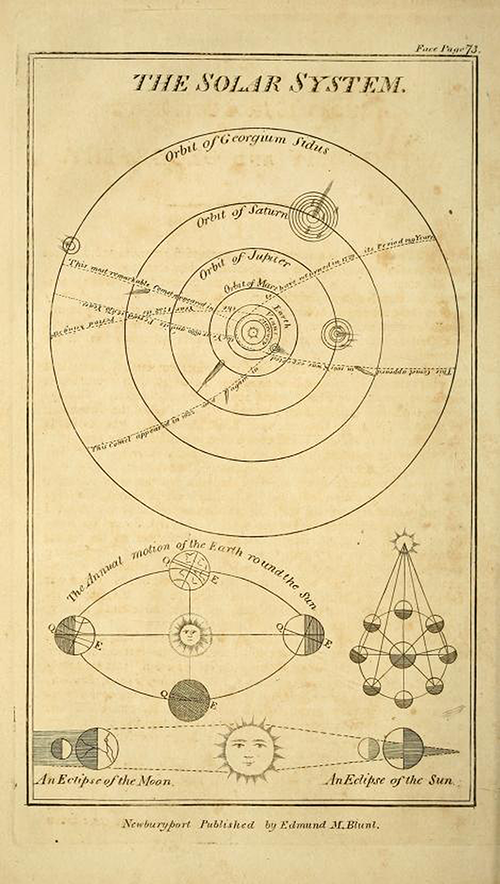- About MAA
- Membership
- MAA Publications
- Periodicals
- Blogs
- MAA Book Series
- MAA Press (an imprint of the AMS)
- MAA Notes
- MAA Reviews
- Mathematical Communication
- Information for Libraries
- Author Resources
- Advertise with MAA
- Meetings
- Competitions
- Programs
- Communities
- MAA Sections
- SIGMAA
- MAA Connect
- Students
- MAA Awards
- Awards Booklets
- Writing Awards
- Teaching Awards
- Service Awards
- Research Awards
- Lecture Awards
- Putnam Competition Individual and Team Winners
- D. E. Shaw Group AMC 8 Awards & Certificates
- Maryam Mirzakhani AMC 10 A Awards & Certificates
- Two Sigma AMC 10 B Awards & Certificates
- Jane Street AMC 12 A Awards & Certificates
- Akamai AMC 12 B Awards & Certificates
- High School Teachers
- News
You are here
Mathematical Treasure: Bowditch’s New American Practical Navigator
Nathaniel Bowditch (1773-1838) was, perhaps, the first mathematician in the United States of America to obtain international recognition. Self-educated, Bowditch went to sea at an early age. He returned to the U.S. and became a teacher of navigation. Eventually, he went on to become America’s first insurance actuary. In 1802, he published The New American Practical Navigator, the most accurate reference of its time. The book’s title reflects the spirit and sense of national pride existing in the new country. Bowditch was awarded many honors for his mathematical accomplishments, including possible professorships at Harvard, the United States Military Academy, and the University of Virginia. He refused these university posts.

The frontispiece of the book is a map of the United States and the Caribbean trade area.

A recommendation by the East India Marine Society of Salem [Massachusetts] greets the reader. Such reviews and recommendations were an important part of mathematics and science books at this time. They provided some credence to the contents.

The Table of Contents provides an outline of the scientific maritime knowledge required of a Ship’s Master at this time. Since its publication, the American Practical Navigator has remained a basic reference for the United States Navy.



Basic arithmetical calculations and geometric and trigonometric concepts are reviewed. A geometric rational is provided for the basic trigonometric ratios.

On page 73, a diagram of the solar system is included.

Page 136 contains an illustration of the maritime sextant of this period, “Hadley’s Quadrant.”

The images above were obtained through the courtesy of the University of California Libraries. The work may be viewed in its entirety in the Internet Archive.
Frank J. Swetz (The Pennsylvania State University), "Mathematical Treasure: Bowditch’s New American Practical Navigator," Convergence (July 2017)




